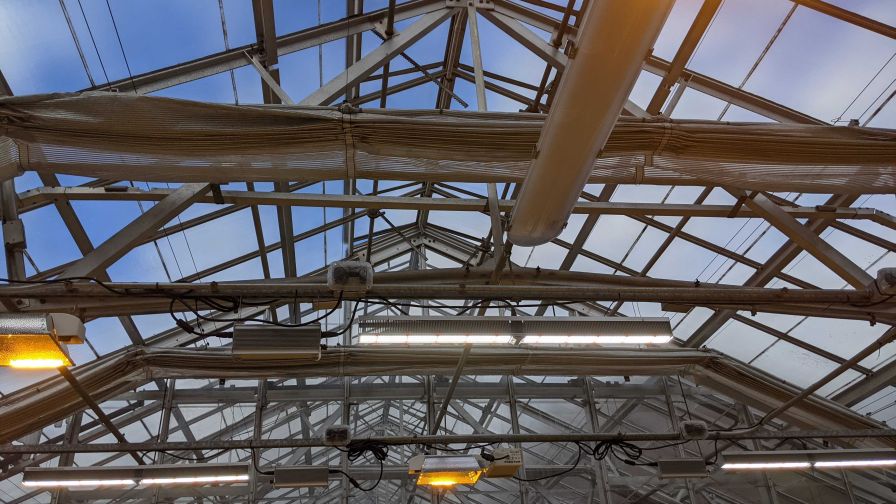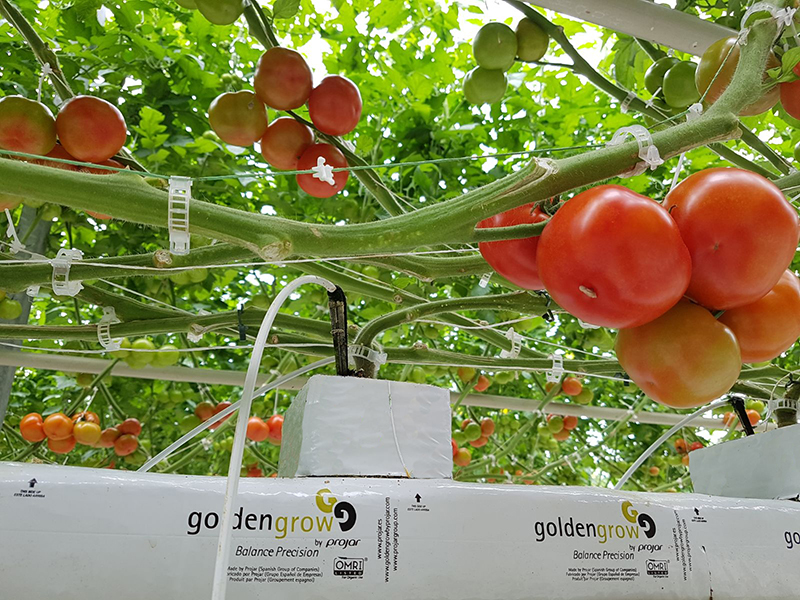How New Energy Codes Are Affecting Greenhouse Growers

When California leads the way in climate policy and energy regulations, others follow. Photo: Gretchen Schimelpfenig, PE
In the past few years, energy codes have been updated to address the performance of greenhouses. Growers in California are not the only ones who should be aware of impacts to changing state codes. Cannabis cultivators and other growers in states with emerging commercial markets should prepare for the potential impact of future regulations.
Changes to the California Energy Code (Title 24, Part 6) for Controlled Environment Horticulture were proposed in 2020, adopted in 2021, and will go into effect at the beginning of 2023. Included in the new 2022 Energy Code are requirements for greenhouses and indoor cultivation facilities to meet minimum standards for horticultural lighting efficacy, dehumidification system efficiency, and greenhouse envelope thermal performance. The requirements affect facilities growing any crop. Newly constructed greenhouses, greenhouses being converted from unconditioned to conditioned, and additions to conditioned greenhouses with permits pulled after Jan. 1, 2023, may need to meet minimum efficiency requirements. Existing buildings are not affected unless a facility alteration triggers requirements in the Energy Code. California growers can use the Energy Code Ace website to access helpful resources for compliance with the California Energy Code and email [email protected] to access an online Code Breaker on Controlled Environment Horticulture. The two energy requirements affecting greenhouses are related to glazing and lighting, as shown in the table below:
 Why should cannabis cultivators in other states care about what is impacting California growers? Energy code changes made in California have historically inspired policymakers in other jurisdictions, especially in regions that have set admirable goals for carbon emissions reductions and resilience. When California leads the way in climate policy and energy regulations, others follow.
Why should cannabis cultivators in other states care about what is impacting California growers? Energy code changes made in California have historically inspired policymakers in other jurisdictions, especially in regions that have set admirable goals for carbon emissions reductions and resilience. When California leads the way in climate policy and energy regulations, others follow.
New cannabis markets continue to open across the U.S., with a majority of Americans living in a state that has decriminalized the plant. Since the adoption of California’s 2022 Energy Code and the new requirements for greenhouses, regulators in other states have taken notes and put forward similar requirements in their policies for licensed cannabis cultivators.
 In Vermont, the Cannabis Control Board issued Rules 1 and 2 to regulate licensing and operation of adult-use cannabis businesses. Rule 2 includes regulations applicable to indoor, greenhouse, and outdoor cultivators. The state’s Commercial Building Energy Standards (CBES) exempt greenhouses from energy code requirements, but commercial cannabis facilities must comply with Rule 2 and its performance requirements. Within one year from their date of licensure, Vermont cannabis greenhouses must come into compliance with requirements that were inspired by California’s 2022 code proposals: ensure coverings meet minimum thermal performance (U-factor) of 0.7 and use horticultural lighting systems that meet minimum efficacy of 1.7 μmol/J for facilities with more than 40 kW of grow lighting load. HVAC systems must also meet efficiency requirements aligned with CBES, with some exceptions.
In Vermont, the Cannabis Control Board issued Rules 1 and 2 to regulate licensing and operation of adult-use cannabis businesses. Rule 2 includes regulations applicable to indoor, greenhouse, and outdoor cultivators. The state’s Commercial Building Energy Standards (CBES) exempt greenhouses from energy code requirements, but commercial cannabis facilities must comply with Rule 2 and its performance requirements. Within one year from their date of licensure, Vermont cannabis greenhouses must come into compliance with requirements that were inspired by California’s 2022 code proposals: ensure coverings meet minimum thermal performance (U-factor) of 0.7 and use horticultural lighting systems that meet minimum efficacy of 1.7 μmol/J for facilities with more than 40 kW of grow lighting load. HVAC systems must also meet efficiency requirements aligned with CBES, with some exceptions.
Vermont may be the first state to align with Title 24, Part 6, but it is likely not the last. There is precedent for state cannabis regulators taking inspiration from the requirements of states that legalized before them. Already, Massachusetts energy regulations affecting horticultural lighting have had ripple effects in Illinois energy standards. As more states bring legal cannabis online, more of them are including energy requirements since coverage of the environmental impact of the industry has increased. For example, the Adult-Use Conditional Cultivator Guidance for New York cannabis growers limited the amount of supplemental lighting licensees can use, and the Office of Cannabis Management will be issuing guidance soon “related to the type of lights a conditional cultivator may use to ensure sustainability metrics can be achieved”, according to the 9/1/2022 update to their FAQs document.
Growers across the country, regardless of crop, should plan for the impacts of energy regulations for controlled-environment agriculture. Greenhouse growers can anticipate systems like lighting and glazing being affected by performance requirements. Participate in stakeholder meetings and provide comments on proposed code changes. Stay familiar with the regulations in other states and how they could be adopted in your region. Be aware of the common systems and their minimum performance requirements to future-proof capital plans and stay ahead of code. Work with experts like engineers at ERI who help growers navigate new energy regulations.









